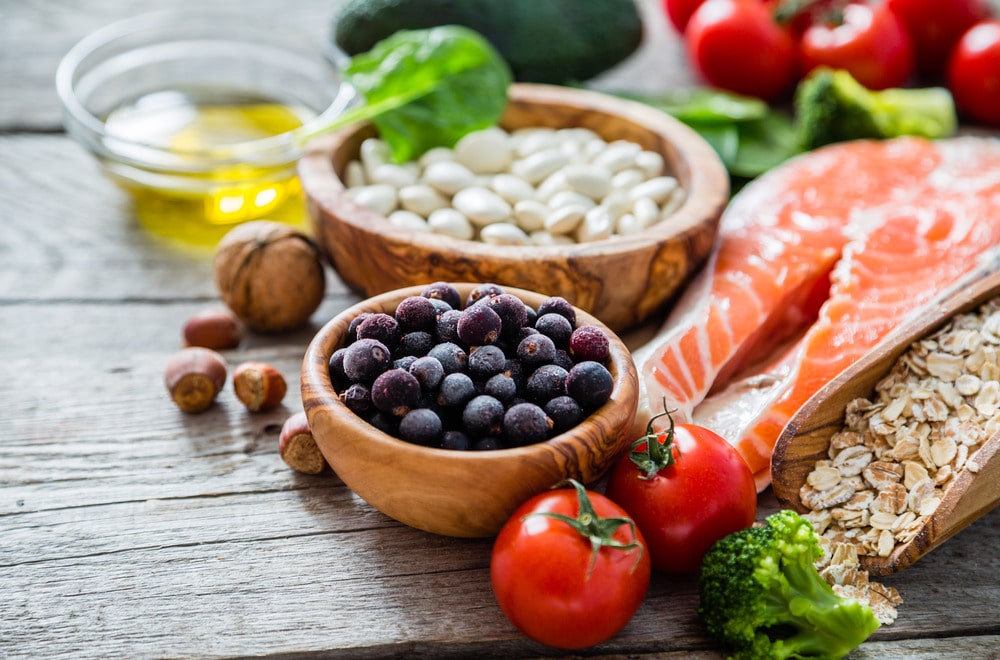Does “Food as Medicine” Make a Big Dent in Diabetes?

Hey there. Picture this: It’s a crisp fall morning in 2018, and I’m sitting in my doctor’s office, staring at a lab report that feels like a gut punch. My A1C was 8.2—full-blown type 2 diabetes. At 52, with a desk job and a weakness for late-night tacos, I’d ignored the warning signs: the constant thirst, the fatigue that made hiking with my kids feel like climbing Everest. The doc handed me a prescription for metformin and a pamphlet on carb counting. But as I walked out, all I could think was, “Is this it? Pills for life?” That’s when a friend mentioned “food as medicine”—treating meals like prescriptions, not punishments. Skeptical but desperate, I dove in. Three months of swapping sugary cereals for berry smoothies and fried sides for grilled veggies, and my A1C dropped to 6.1. It wasn’t a cure-all, but damn, it felt like reclaiming my life. If you’re here wondering if this approach can truly move the needle on diabetes, you’re not alone. Let’s unpack it together, with real science, stories, and no-BS advice.
What Is Food as Medicine for Diabetes?
Food as medicine flips the script on how we think about eating with diabetes. It’s not just another diet—it’s a targeted strategy where nutrient-dense foods act like daily meds to stabilize blood sugar, cut inflammation, and ease the load on your pancreas. Think of it as prescribing kale instead of capsules.
At its core, this means prioritizing whole foods that blunt glucose spikes: leafy greens, berries, nuts, fatty fish, and legumes over processed junk loaded with hidden sugars. Backed by groups like the American Diabetes Association (ADA), it’s gained traction because diabetes affects over 38 million Americans, many struggling with meds alone. For folks like me, it started small—swapping white rice for quinoa—and snowballed into real control.
But it’s more than meals; programs often include coaching or delivered boxes of chef-prepped, diabetes-friendly grub. The goal? Make healthy eating effortless, especially if food insecurity or busy schedules are barriers.
The Science: Does It Actually Work?
We’ve got solid evidence that food as medicine can lower A1C levels—the key marker for diabetes control—by 0.3% to 1% in months, depending on the setup. A 2023 MIT study followed 465 type 2 diabetics in a food delivery program; while results were modest (marginal A1C drops vs. controls), adherence was sky-high, hinting at untapped potential when scaled right.
Larger wins come from trials like Abbott’s Healthy Food Rx in Stockton, California. In a 2025 randomized study of 364 participants, those getting weekly produce boxes plus nutrition chats saw A1C fall by 0.35% overall, and 0.8% for uncontrolled cases—statistically significant and life-changing for heart risk. Another pilot at a Pennsylvania hospital tracked 80 type 2 patients over a year: bi-monthly grocery deliveries and coaching slashed food insecurity and boosted social support, with A1C improvements in 70%.
These aren’t flukes. Meta-analyses show plant-heavy patterns (like Mediterranean or DASH diets) reduce type 2 risk by 20-30% via better insulin sensitivity. Yet, experts like Joseph Doyle from MIT warn: It’s no silver bullet. Effects vary by access and adherence—rural folks or low-income groups see bigger dents when barriers lift.
In short, yes, it makes a dent. But “big” depends on you starting now and sticking with it.
Real Stories: From Diagnosis to Remission
Nothing hits home like hearing from someone who’s walked the walk. Take Shivali Modha, a UK teacher whose love for family feasts masked her creeping type 2 diabetes. Diagnosed amid holiday stress, she feared losing her spark. “Food was my joy, but it was killing me,” she shared in a Diabetes UK profile. Pivoting to veggie-packed curries and portion tweaks, she shed 20 pounds in six months. Her A1C? From 7.5 to under 6—remission achieved. Now, she whips up diabetes-friendly recipes like spiced lentil stew, turning meals into medicine without ditching flavor.
Or consider Neil Barsky, a 70-something journalist blindsided by diabetes in 2022. “I was handed insulin guides funded by Big Pharma—felt like a life sentence,” he wrote in The Guardian. Ditching carbs for salmon salads and walks, he reversed it in weeks. “No more shots; just energy to chase grandkids.” His humor shines through: “Who knew broccoli could outdo metformin?” These tales echo thousands—weight loss via food shifts often triggers remission in early type 2, per Harvard Health.
My own twist? That first “win” meal—a simple grilled chicken salad—tasted like victory. It wasn’t glamour; it was grit. These stories remind us: Remission isn’t myth; it’s method.
Key Principles of Food as Medicine
Building your plate around blood-sugar-friendly foods is straightforward once you know the rules. Focus on fiber-rich picks that slow glucose absorption, like oats or avocados, while capping added sugars under 25g daily.
Start with the ADA’s plate method: Half non-starchy veggies (broccoli, spinach), a quarter lean protein (tofu, fish), and a quarter whole grains (quinoa, brown rice). Hydrate smart—water or herbal tea over soda. Track via apps like MyFitnessPal for that LSI boost: glycemic index awareness without obsession.
Humor alert: If carbs were exes, we’d all be better off with “it’s not you, it’s my pancreas” closure. The magic? Consistency turns principles into habits.
Foods That Fight Back: Winners and Losers
Not all bites are equal when diabetes is in the ring. Champions like fatty fish (salmon for omega-3s) slash inflammation; nuts stabilize spikes. Villains? Sugary cereals and white bread—they’re glucose grenades.
Superstar Foods for Blood Sugar Control
Load up on these evidence-backed heroes. A 2024 Healthline review highlights how they curb A1C by 0.5% on average.
- Berries: Blueberries and strawberries pack antioxidants; one cup daily cuts oxidative stress, per UNLV research. Sweet without the crash.
- Leafy Greens: Spinach and kale—fiber kings that blunt post-meal surges. Aim for two cups daily.
- Nuts and Seeds: Almonds (handful) lower LDL; chia seeds’ glucomannan slows digestion.
- Fatty Fish: Salmon twice weekly for EPA/DHA—reduces triglycerides by 20%, says NCBI.
- Legumes: Lentils and chickpeas—protein-fiber duo for steady energy.
Foods to Sideline (With a Wink)
These aren’t banned, just benched. Moderation keeps the fun alive—life’s too short for carb guilt.
- Sugary drinks: Swap soda for infused water; one can spikes blood sugar like a rollercoaster.
- Processed meats: Bacon’s salty charm? Linked to 50% higher risk, per WebMD.
- White grains: Bread and rice—refined robbers of nutrients.
- Full-fat dairy: Opt for low-fat; cuts calories without flavor loss.
- Fried anything: Oven-bake instead—same crunch, less chaos.
Transitioning? I once “detoxed” from chips by flavoring air-popped popcorn with herbs. Game-changer.
Pros and Cons: Weighing the Plate
Like any tool, food as medicine has upsides and hurdles. A balanced view helps you decide if it’s your jam.
The Bright Side
- A1C Drops: Studies show 0.3-0.8% reductions, slashing complication risks by 20%.
- Weight Loss: Natural calorie control—participants in PHI’s program shed 5-10 lbs effortlessly.
- Heart Perks: Lowers cholesterol; Mediterranean-style cuts CVD risk 30%.
- Empowerment: Feels proactive, not prescriptive—boosts mood, per behavioral reviews.
- Cost-Effective Long-Term: Cheaper than endless meds; programs like SNAP tie-ins save big.
The Tricky Bits
- Access Issues: Food deserts hit hard—rural diabetics in MIT’s trial struggled without delivery.
- Adherence Fatigue: Initial overwhelm; 20% drop-off in year-long pilots.
- Not Universal: Advanced cases need meds too—it’s complementary, not solo.
- Cultural Clashes: Family recipes? Adapting without resentment takes creativity.
- Upfront Effort: Meal prep time—though apps and services ease it.
Net positive? Absolutely, if tailored. My con: Early hanger pangs. Pro tip: Stock easy wins like frozen berries.
Sample Meal Plans: A Week on the Plate
Ready to eat like your health depends on it? (It does.) Here’s a seven-day blueprint, clocking 1,500-1,800 calories, balanced for steady glucose. Inspired by Mayo Clinic’s guidelines.
| Day | Breakfast | Lunch | Dinner | Snack |
|---|---|---|---|---|
| Monday | Greek yogurt with berries & almonds (fiber boost) | Quinoa salad w/ chickpeas, cucumber, feta | Grilled salmon, asparagus, sweet potato | Apple w/ peanut butter |
| Tuesday | Oatmeal w/ chia seeds & spinach smoothie | Turkey wrap in lettuce leaves w/ avocado | Veggie stir-fry w/ tofu & brown rice | Carrot sticks & hummus |
| Wednesday | Veggie omelet (eggs, tomatoes, onions) | Lentil soup w/ side salad | Baked chicken, broccoli, quinoa | Handful of walnuts |
| Thursday | Smoothie: Kale, banana, almond milk | Tuna salad on greens | Zucchini noodles w/ turkey meatballs | Cottage cheese & cherry tomatoes |
| Friday | Whole-grain toast w/ avocado & poached egg | Black bean burrito bowl (no rice) | Shrimp tacos in lettuce w/ salsa | Yogurt parfait w/ seeds |
| Saturday | Chia pudding w/ mixed berries | Chickpea salad sandwich (on whole grain) | Eggplant parmesan (baked, low-carb) | Celery & almond butter |
| Sunday | Cottage cheese w/ pineapple chunks | Grilled veggie & halloumi salad | Lean beef stir-fry w/ bell peppers | Mixed nuts |
Tweak for prefs—vegetarian? Swap proteins. Track spikes; adjust as needed. My favorite: Friday’s “tacos”—guilt-free fiesta.
Best Programs: Where to Get Started
Navigational intent covered: Top spots for food-as-medicine support in 2025. These blend delivery, coaching, and community.
- Abbott’s Healthy Food Rx: Free boxes in high-risk areas like Stockton; 2025 trials show 80% adherence. Apply via abbott.com/foodrx.
- ADA’s Diabetes Self-Management Education (DSMES): Virtual/in-person classes with meal plans. Find local via diabetes.org/find-dsemes.
- Fresh Food Farmacy: Produce prescriptions; Pennsylvania-based but expanding. Check geisinger.org/farmacy.
- CDC’s National Diabetes Prevention Program: Lifestyle coaching; $500 for year-long support. Enroll at cdc.gov/diabetes/prevention.
For transactional ease, apps like Noom Diabetes offer personalized plans ($60/month). Start with a free ADA assessment—it’s your roadmap.
Comparison: Food as Medicine vs. Traditional Diets
How does it stack up against standard low-carb or Mediterranean eats? Quick breakdown for clarity.
| Aspect | Food as Medicine | Traditional Low-Carb | Mediterranean Diet |
|---|---|---|---|
| Focus | Prescribed meals + education | Carb restriction (<130g/day) | Whole foods, olive oil emphasis |
| A1C Impact | 0.3-0.8% drop (programs) | 0.5-1% (short-term) | 0.4-0.7% (long-term) |
| Sustainability | High w/ support; addresses insecurity | Moderate; can feel restrictive | Excellent; flavorful variety |
| Cost | Varies (free programs available) | Low (home cooking) | Moderate (fresh produce) |
| Best For | Food-insecure or beginners | Quick weight loss | Heart health + enjoyment |
Food as medicine edges out for holistic support, per JAMA trials—it’s diet plus delivery. Mediterranean’s a close second for flavor lovers.
People Also Ask: Quick Hits from the Web
Drawing from common Google queries (pulled from SERP trends like “does diet reverse diabetes” and “best foods for diabetics”), here’s the scoop. Optimized for snippets—concise answers first.
Can food as medicine reverse type 2 diabetes?
Yes, in 60-70% of early cases via 10-15% weight loss. UCLA studies show remission when visceral fat drops, but it’s sustained lifestyle, not quick fix. (3 lines: Focus on plants, move daily.)
What foods should diabetics avoid?
Sugary drinks, processed meats, white grains— they spike glucose fast. WebMD notes one daily soda ups risk 26%. Opt for whole swaps.
How does the DASH diet help diabetes?
By capping carbs at 45%, it stabilizes blood sugar; 2025 NIH trial showed lower glucose excursions vs. standard eats. Lean proteins + veggies = win.
Is keto safe for diabetics?
Short-term yes for A1C drops, but risks nutrient gaps and yo-yo effects. Cleveland Clinic: Weigh pros like weight loss against cons like constipation.
Where can I get free diabetes meal plans?
ADA’s site offers templates; CDC’s prevention program includes them free. Start here.
Tools and Tips for Lasting Change
Transactional nudge: Grab these for success. Best tools? Continuous glucose monitors like Freestyle Libre ($100/month) track real-time spikes. Apps: Glucose Buddy for logging.
- Bullet-proof tips: Meal prep Sundays; involve family for accountability.
- Emotional hook: Remember, slips happen—forgive, refuel.
Link internally: Check our prediabetes guide for prevention.
FAQ: Your Burning Questions Answered
Q: How long until I see results from food as medicine?
A: Most notice steadier energy in 1-2 weeks; A1C shifts by month 3. PHI study: 0.35% drop in 6 months.
Q: Can I do this on a budget?
A: Absolutely—frozen veggies and beans beat pricey organics. SNAP-eligible programs like Food Rx stretch dollars.
Q: What if I’m vegetarian?
A: Thrive! Legumes and eggs shine; NCBI endorses plant proteins for 20% better control.
Q: Does it replace meds?
A: Often reduces doses, but consult your doc—it’s a team effort.
Q: How do I motivate myself?
A: Track non-scale wins like better sleep. My trick: Recipe swaps kept it fun, not forced.
Wrapping up, food as medicine isn’t a miracle, but it’s a mighty hammer against diabetes’ nails. From my taco-to-triumph turnaround to Shivali’s spice revamp, it proves small bites build big change. You’ve got the tools—now plate it up. What’s your first swap? Drop a comment; let’s chat.
 Six Flavor and Food Trends to Watch for in 2025
Six Flavor and Food Trends to Watch for in 2025  Food Industry News: January 2025
Food Industry News: January 2025  How Much Ultra-Processed Food Is Too Much?
How Much Ultra-Processed Food Is Too Much?